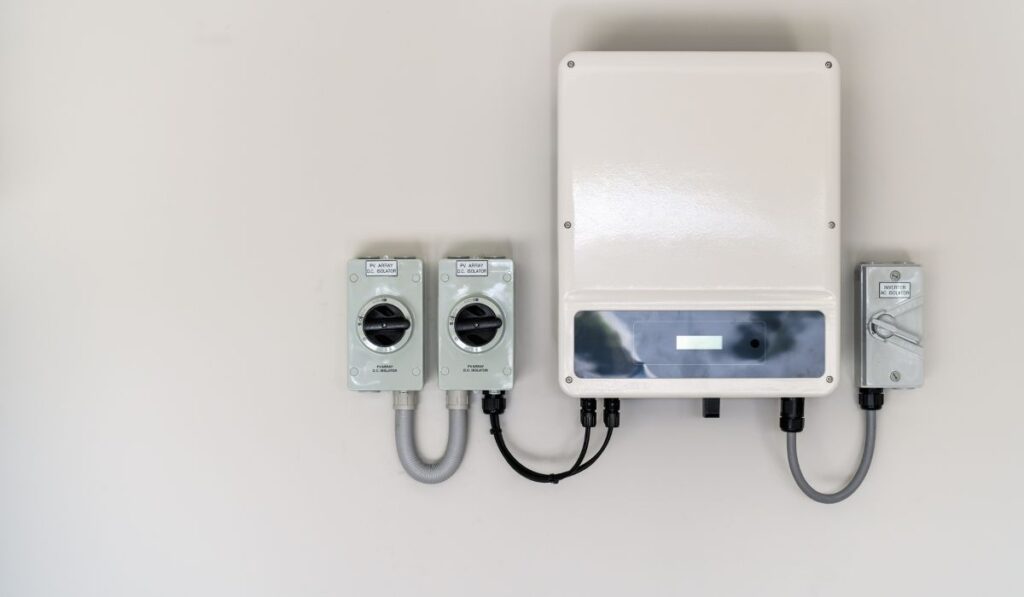Yes, you can use an inverter to power a projector. You need to check the power in watts and current in amps of the inverter you will use for the projector.
In general, the power needs of the projector will tell you what kind of inverter is required. Make suitable adjustments as needed. Make sure all the wires are properly connected, covered, and that the projector is receiving all the power it requires.
In this article, I’ll explain what you need to know about pairing an inverter with your projector for power on the go.
Can Projectors Run On Inverter?

Yes, most projectors can run on an inverter. Just make sure to get an inverter rated for the projector’s needs and power draw.
Here are some key points to keep in mind when running projectors on inverters:
- Inverters convert DC battery power into standard AC power that projectors need. As long as the inverter provides enough wattage for the projector, it will work.
- Projectors typically use 200-500 watts on average. So the inverter needs to be rated for at least that much power. Higher-lumen projectors may require 1000+ watts.
- Pure sine wave inverters work best with projectors. Modified sine wave inverters may cause a slight audible buzzing from some projectors but otherwise work.
- Check the projector manual to confirm it can accept a modified sine wave if not using a pure sine wave inverter.
- Avoid cheap low-power inverters only meant for charging phones/laptops. They often don’t provide enough power for a projector.
- Running a projector on an inverter will drain a battery much faster than running smaller devices. Keep battery capacity in mind.
- Use short HDMI and power cables to connect the projector to the inverter to minimize voltage drop.
How to Run a Projector on an Inverter?
Running a projector on an inverter can be an excellent way to keep your presentations going during a power outage or if you’re in a location without access to reliable electricity.
Here’s how you can do it:
Understand Your Power Requirements
Before you can run a projector on an inverter, you need to know how much power your projector consumes. This is usually mentioned in the product specifications and is generally measured in watts. For example, a typical projector might consume between 150 and 800 watts.
Choose the Right Inverter
Inverters convert DC power (like from a battery) into AC power (like from a wall outlet), which is what most projectors use. The inverter you choose must be capable of supplying the power required by your projector. If your projector needs 300 watts, for example, you should choose an inverter that can deliver at least that much. To account for power surges during startup, it’s a good idea to choose an inverter with a higher rating, say 20-30% more than your projector’s power consumption.
Power Source
You also need a DC power source to connect to the inverter. This is typically a battery. The battery should have sufficient capacity to run the projector for the duration you require. Battery capacity is typically measured in amp-hours (Ah). To calculate the capacity you need, divide the power consumption of your projector (in watts) by the voltage of your battery (usually 12V), then multiply by the number of hours you want to run the projector.
For example, if your projector consumes 300 watts, and you want to run it for 2 hours on a 12V battery:
Battery capacity = (300W / 12V) * 2 hours = 50Ah
Remember that it’s not good for the battery to be completely drained, so choose one with a higher capacity than you calculate.
Connect the Inverter to the Power Source
Connect the inverter to your battery. This is usually done with cables that come with the inverter, attaching to the battery’s positive (red or +) and negative (black or -) terminals.
Connect Your Projector to the Inverter
Now you can plug your projector into the inverter just like you would into a wall outlet. Turn on the inverter, then turn on your projector.
Remember to keep an eye on your power usage, and ensure that your setup doesn’t exceed the inverter’s or battery’s capabilities. Also, always follow all safety instructions provided with your equipment.
Please note that running a device like a projector off an inverter and battery setup is more of a temporary or emergency solution. The performance of the projector might not be at its best compared to running it off a regular wall outlet.
Why Would You Use an Inverter for a Projector?
There are several reasons why you might want to use an inverter to power a projector:
Power Outages: If you’re in a location where electricity is unreliable, an inverter can allow you to use your projector even when the power goes out. This could be useful in scenarios where you have a business presentation to make, have some teaching sessions, or have some outdoor movie nights.
Outdoor Usage: If you’re using your projector outdoors where there’s no access to power outlets, an inverter connected to a battery can provide the power you need. This is particularly useful for camping trips, outdoor events, or backyard movie nights.
Remote Locations: If you’re in a remote location without access to grid power, such as a field site for research or a remote construction site, an inverter can provide a way to use your projector.
Backup Power: Even in locations with reliable electricity, having an inverter as a backup can be useful. This can ensure that your presentation or event can continue even if there’s a temporary power outage.
Mobile Presentations: If you’re traveling and need to give presentations in various locations, some of which may not have reliable power, carrying an inverter and battery can ensure you’re always able to use your projector.
Note – Running a projector on an inverter is typically a temporary or backup solution, as it may not provide as stable or reliable power as a traditional power outlet.
In Summary
Using an inverter to power a projector is definitely possible and can be very useful in situations where regular power sources are unavailable or unreliable. However, it is important to carefully match the inverter size and battery capacity to the power needs of the specific projector model.
Proper setup is required to safely run a projector on an inverter without damaging the equipment or causing interruptions. While it may not provide the same consistent power quality as a wall outlet, an inverter can still allow projector usage in many outdoor or remote locations that would otherwise not have access to powered projections.
With the right inverter and battery selection, a projector can most certainly be run effectively using an inverter as the temporary or backup power source.

Paul Joseph is a seasoned writer and projector expert with a knack for troubleshooting and fixing projector issues. Through his informative articles, he shares valuable insights on projector maintenance, optimization, and reviews of top projector models. With a passion for technology, Paul remains dedicated to empowering readers in their projector journey.